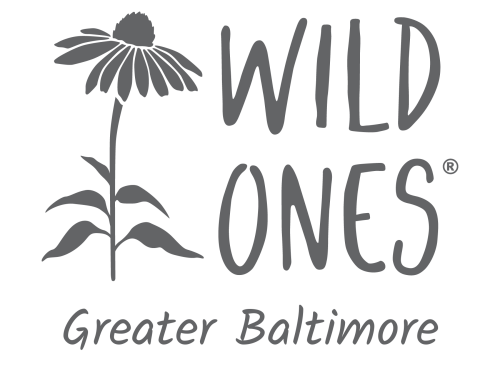by Anne Gneo ✎
On a perfect evening in mid-July, we enjoyed a short break from the heat and a tour of Amanda Wray, Wild Ones Greater Baltimore President’s, gorgeous property in Towson. As we meandered through the 2.25-acre lot, Amanda provided a treasure trove of information about the native plants on her property leaving us with new knowledge and inspiration.
The garden tour began near the stone house in the most formal garden. Originally installed by a professional landscaper using non-native plants in 2018, Amanda began redesigning two years ago. Rather than ripping everything out and starting over, a few established non-native plants were allowed to remain. The current state is a gorgeous cottage garden where a variety of native plants are the feature.

Two native vines draw your eye up on each side of the garden. A large Coral Honeysuckle (Lonicera sempervirens) climbs a trellis on the garage and attracts hummingbirds throughout the summer. Virginia Creeper (Parthenocissus quinquefolia) climbs the house covering some imperfect stonework. Virginia Creeper is one of the safest vines to grow on the side of a home and does not require any additional support. It provides berries for the birds and often has deep red foliage in the fall.
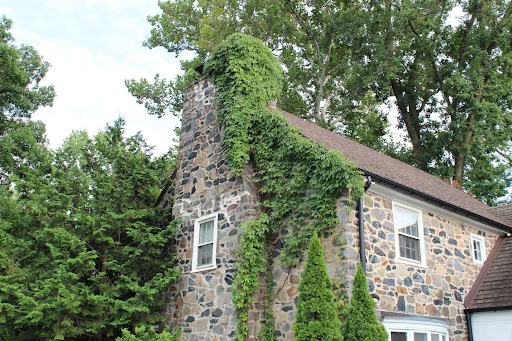

We turned around to view the second formal garden by the driveway. Just two years ago, this area was covered in Canada Thistle, Daffodils, Culinary Mint, and Porcelain Berry. Amanda cleared the space, adding landscaping cloth and mulch to help keep the unwanted plants from immediately returning. The cloth will be removed next year, as the native plants fill in and the invasives are mostly under control. This area is a showstopper and has been successfully designed to view from all angles.
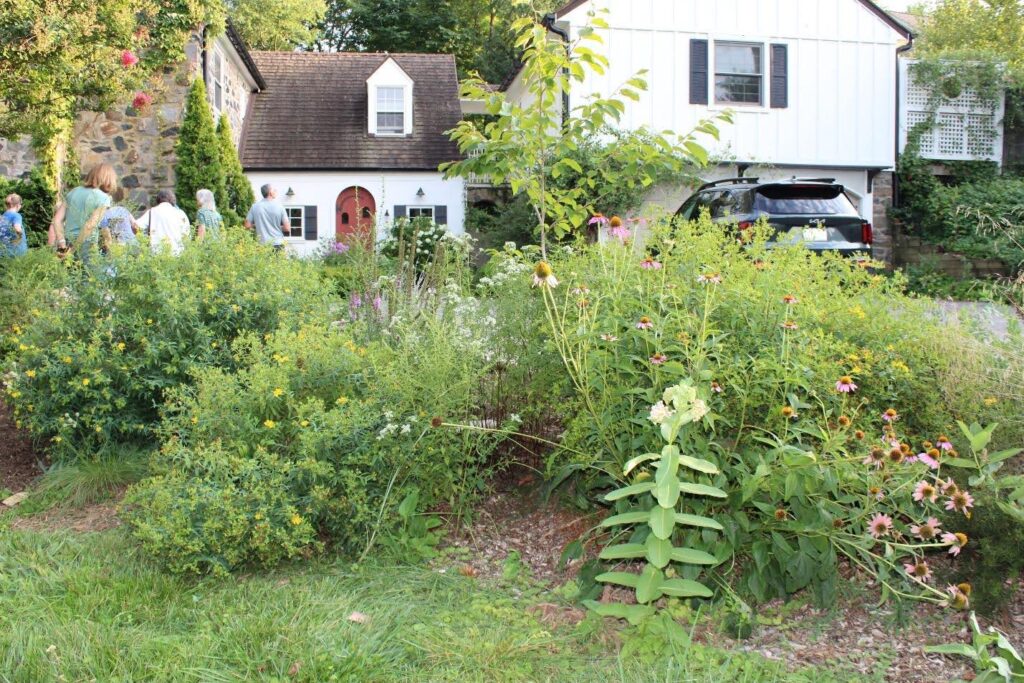
Two Shrubby St John’s Wort (Hypericum prolificum) bushes steal the show when in bloom and attract a variety of pollinators possibly outcompeting Mountain Mint (Pycnanthemum family) infamously known to be an insect magnet. Blue Vervain (Verbena hastata) reseeds as it pleases and brings a pop of purple. Additional natives including Pink Muhly Grass (Muhlenbergia capillaris), Tickseed (Coreopsis verticillata), Common Yarrow (Achillea millefolium), Blue False Indigo (Baptisia australis), Sundrops (Oenothera fruticosa) and many others provide a variety of textures and bloom times.
The beauty of these gardens is spectacular, but Amanda always sees more potential and discussed her plans for improvements. While some of these changes were part of her initial plan, native plants often perform in unexpected ways as they mature, and frequent “edits” are part of the design process.
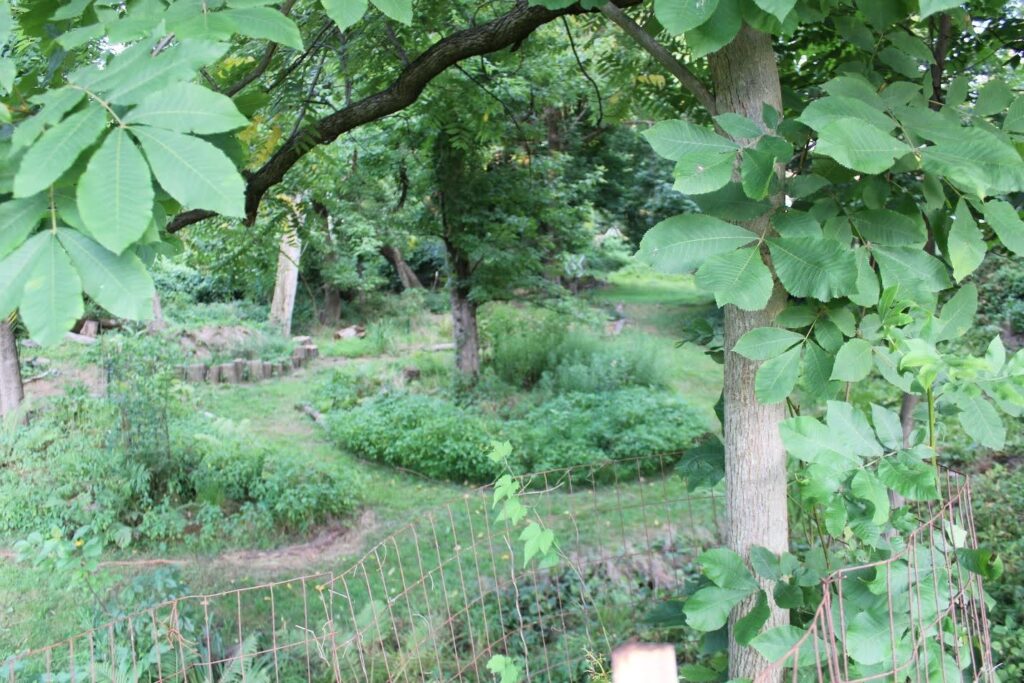
The tour continued to the wilder, shaded garden near the creek. This area is in a flood plan and can fill with water or completely dry out depending on the weather. Originally covered in turf grass, there was an unpleasant smell when flooded. Native plants were added to help the rainwater soak into the clay soil and the smell is no longer an issue. Adding plants that enjoy both wet and dry conditions is essential. Fortunately, there is no shortage of Maryland native plants able to handle these conditions. Multiple beds were created using logs and branches to frame them out, showing intentionality. Here again, Amanda discussed her future plans as she continues to remove invasive plants and add additional native plants.
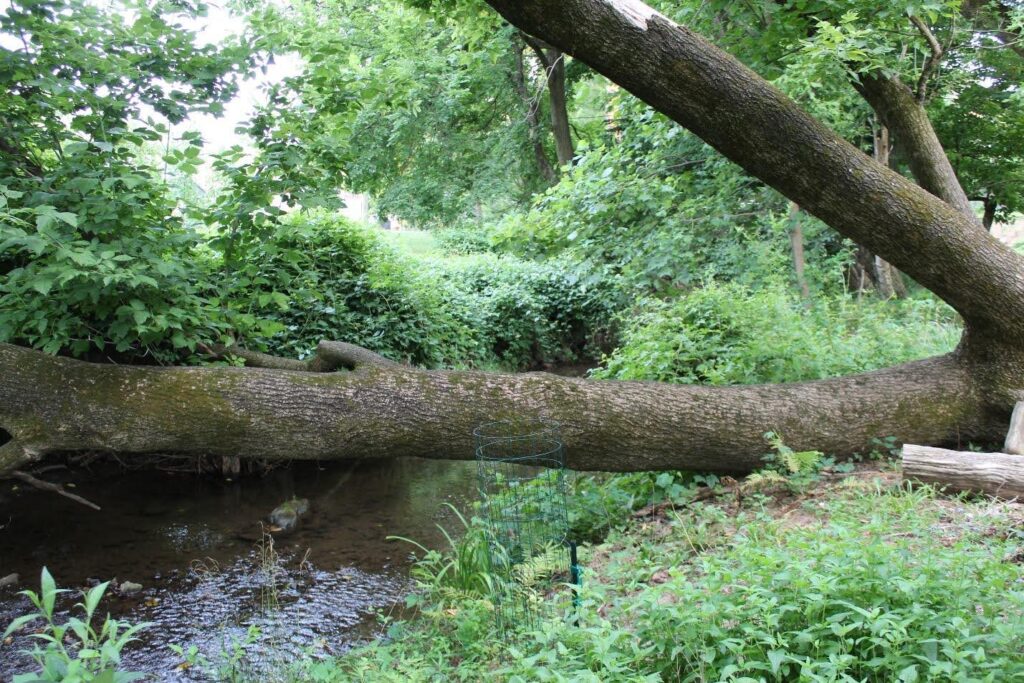


A focus on creating a variety of habitats is a priority. Over 50 trees were planted through the Baltimore County Backyard Tree Program. Herons often fish on the creek and a groundhog has made a home in the base of a fallen tree. A large snag stands supported by a healthy tree and a brush pile is tucked into the corner of the property. Throughout the property fallen branches and logs are repurposed as design elements providing additional habitat. Using a plastic tub, a small pond provides a home for frogs and other animals that prefer still water. Surrounding the pond with large stones and adding water lilies and duckweed make it easy to forget that it was not solely designed for our viewing enjoyment.
The tour ended with time to socialize as Amanda invited us into her home serving a delicious Hibiscus tea and homemade salsa.
While Amanda considers her property a “native garden in development” with many projects still to be completed, the guests marveled at the beauty and life that she has created in just a few short years.

To become a Wild Ones member, or give the gift of membership, visit our national site, WildOnes.org. ❀
Photos by Anne Gneo
